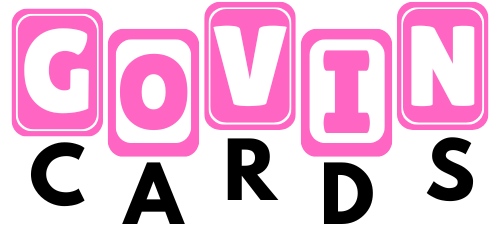Remember when your toddler pointed at everything and said “Dat? Dat?” about fifty times a day? They’re not just being curious. They’re desperately trying to learn the names for everything in their world.
Two-year-olds collect words like other kids collect stickers. Every new word they learn helps them tell you what they want, what hurts, or what excites them. But most parents don’t realize this: toddlers learn words best when they can see clear pictures of things they already know.
Your two-year-old doesn’t need fancy educational theories. They need simple pictures with words they can actually use. These flashcards do exactly that.
These flashcards for 2 year old cover everything your toddler sees and touches daily. Colors on their clothes and toys. Shapes in their snacks and blocks. Feelings they get but can’t explain yet. Letters that will help them read someday. Animals that make them squeal with delight. Numbers for counting their fingers and crackers.
Images
We didn’t just throw random pictures together. Every single card connects to something your toddler already experiences.
Colors They See Everywhere
Your two-year-old notices red fire trucks, green leaves, yellow school buses, and blue water. These twelve color cards help them put names to what their eyes already see.
- Red pops up in strawberries, stop signs, and fire engines. When your toddler knows “red,” they can tell you which crayon they want.
- Blue fills the sky, swimming pools, and maybe their favorite cup. Once they learn “blue,” they’ll point it out everywhere.
- Yellow brightens up bananas, the sun, and taxi cabs. Most toddlers love saying “yellow” because it sounds fun.
- Green covers grass, broccoli they won’t eat, and tree leaves. Perfect for nature walks when they want to name everything.
- Orange shows up in pumpkins, basketballs, and carrots. It’s often the first color toddlers really master because it stands out so much.
- Purple appears in grapes, some flowers, and certain toys. Many two-year-olds think “purple” is hilarious to say.
- Pink colors piglets, flamingos, and lots of toys. Some toddlers develop very strong feelings about pink.
- Black covers shoes, nighttime, and panthers. Helps them describe dark things they notice.
- White fills milk, snow, and fluffy clouds. Simple but necessary for talking about everyday stuff.
- Brown appears in mud, chocolate, and tree trunks. Great for outdoor adventures.
- Grey shows up in elephants, rainy skies, and sidewalks. Rounds out their color vocabulary nicely.
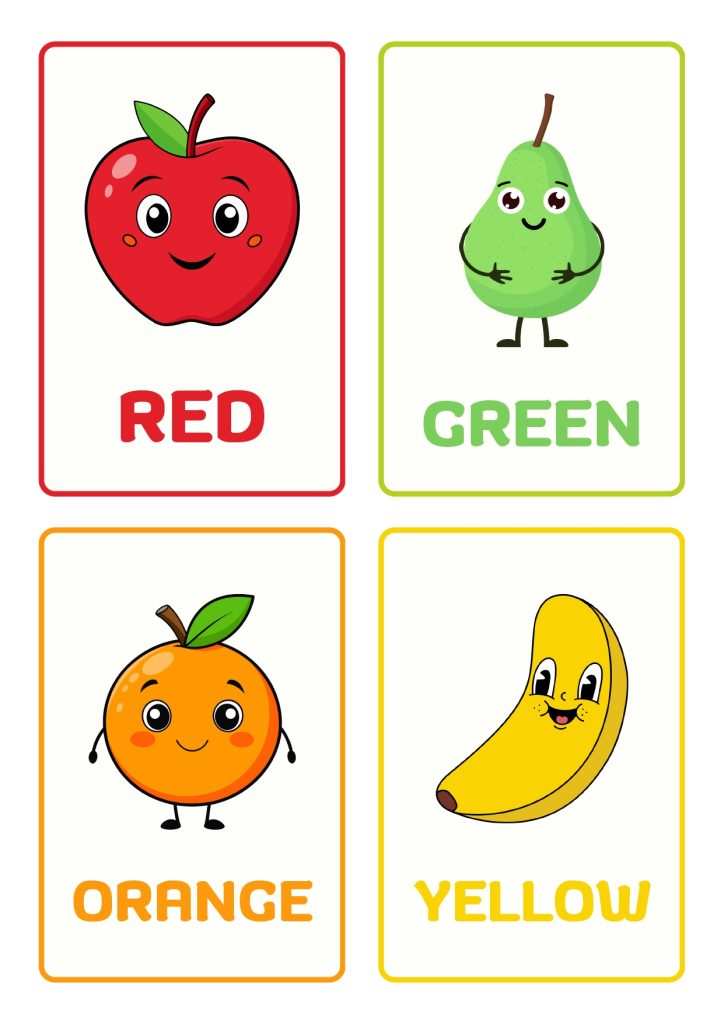
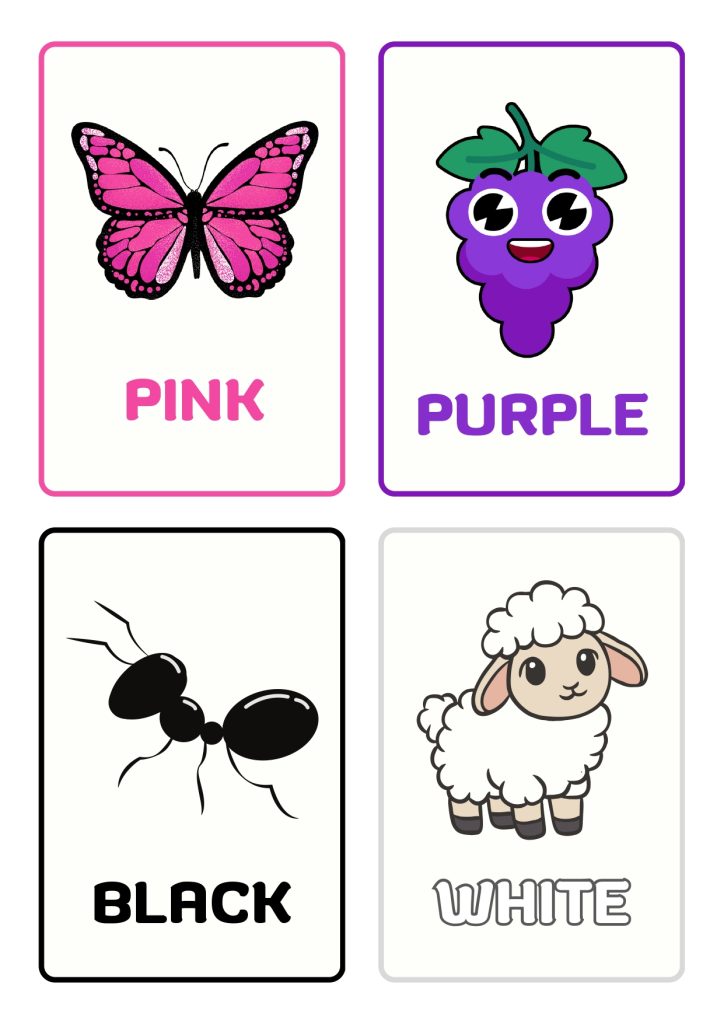
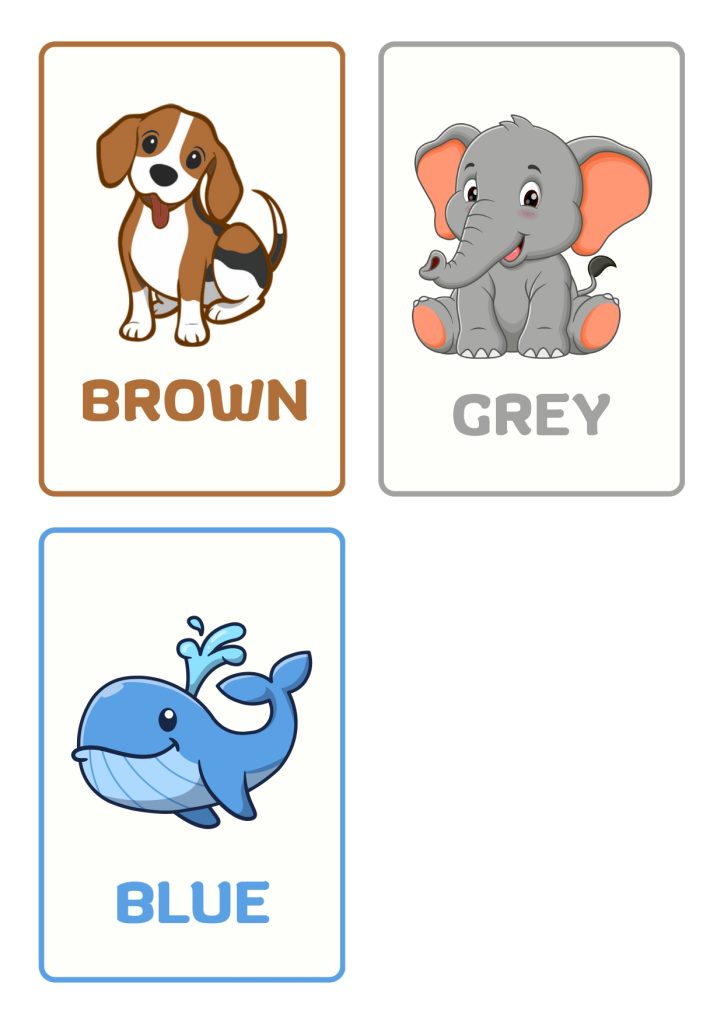
Shapes They Handle Every Day
Toddlers don’t need geometry classes. They need to recognize shapes in their goldfish crackers, building blocks, and picture books. These eight shape cards connect to real objects they touch constantly.
- Circle appear in wheels, balls, and round cookies. Two-year-olds love anything that rolls, so circles make perfect sense to them.
- Square shows up in windows, alphabet blocks, and sandwiches cut just right. Usually, the easiest shape for toddlers to spot.
- Triangle appear in pizza slices, birthday hats, and some musical instruments. Those pointy corners make it stick in their memory.
- Rectangle covers doors, cereal boxes, and most books. Once toddlers learn this word, they find rectangles absolutely everywhere.
- Oval shows up in eggs, footballs, and bathroom mirrors. It’s like a circle that got stretched, which toddlers find amusing.
- Star appear in the nighttime sky, stickers on reward charts, and holiday decorations. Two-year-olds usually recognize stars before they can draw them.
- Heart shows up on Valentine’s cards, some cookies, and jewelry. It’s both a shape and something they hear about in songs.
- Diamond appear in some necklaces, playing cards, and fancy decorations. More advanced, but it completes their shape knowledge.
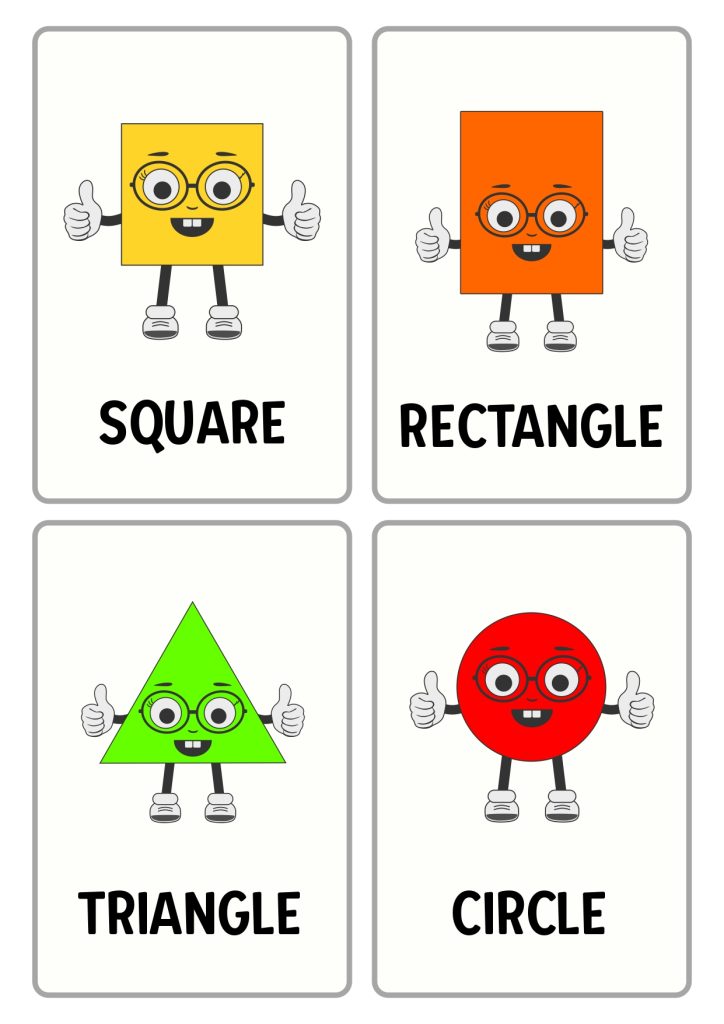
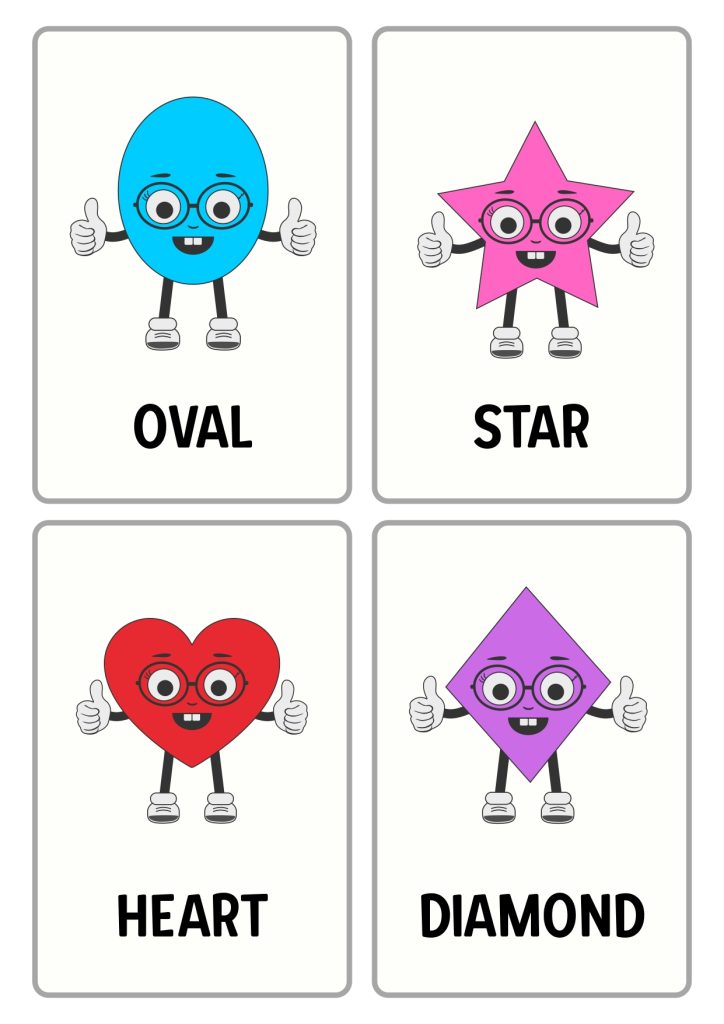
Feelings They Get But Can’t Explain
Two-year-olds feel everything like it’s the biggest thing that has ever happened. But they usually don’t have words for those huge emotions. These eight emotion cards give them vocabulary for their daily feelings.
- Happy shows that pure toddler joy. The face they make when they see bubbles or get ice cream.
- Sad captures that heartbroken look when their block tower crashes or when grandma leaves.
- Angry shows the mad face they make when their sister takes their toy or when dinner isn’t ready fast enough.
- Crying represents those big tears that come with skinned knees or disappointments.
- Tired shows that droopy, cranky expression right before they need a nap, but insist they don’t.
- Laughing captures their belly giggles when dad makes funny faces or when they see something ridiculous.
- Scared shows the worried look when the vacuum cleaner starts or when thunder rumbles.
- Surprised displays those wide eyes when something unexpected happens, like jack-in-the-box toys.
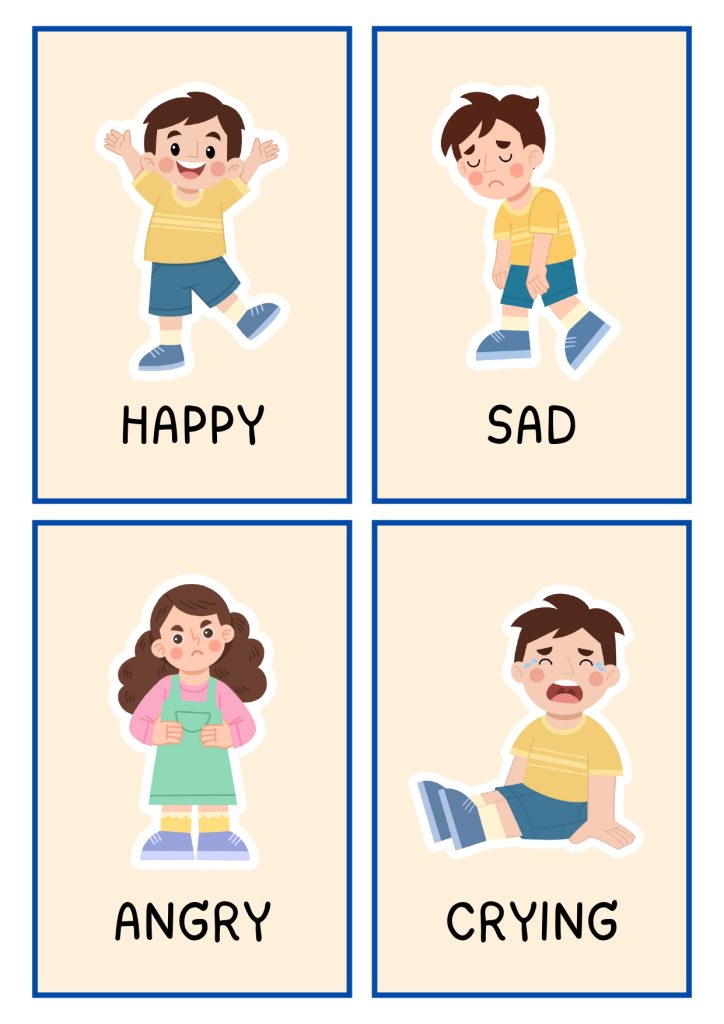
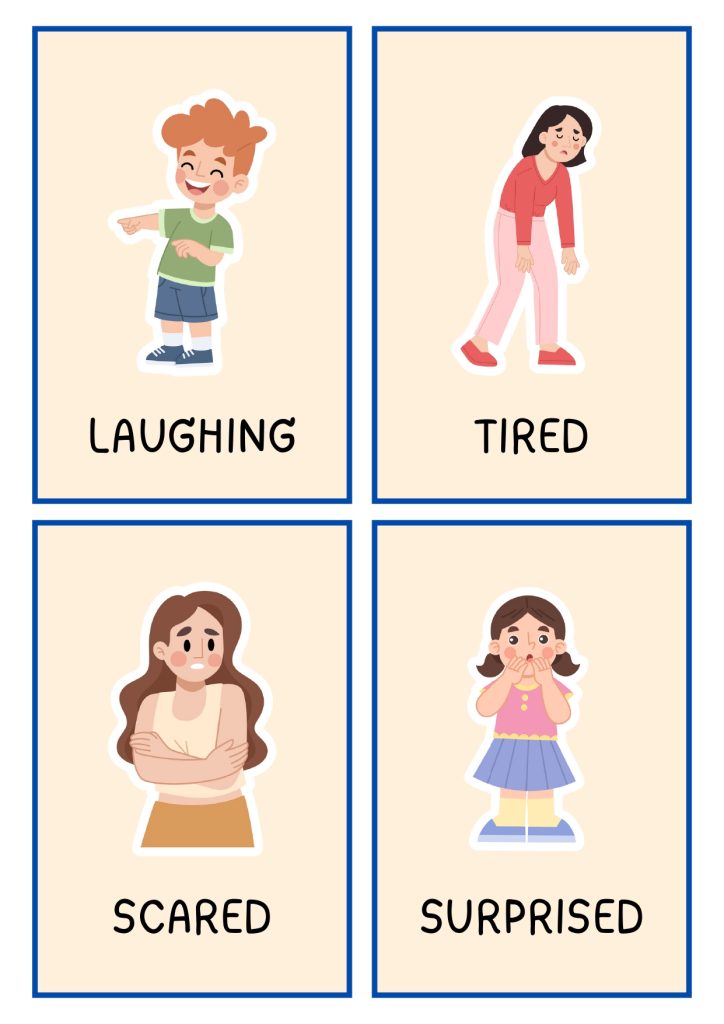
Letters That Begin Their Reading Adventure
These 26 alphabet cards pair each letter with an animal or object that starts with that sound. Two-year-olds can’t read yet, but they’re building the foundation for everything that comes later.
- A for Apple connects the first letter to something crunchy they eat for snacks.
- B for Ball links the letter to their favorite thing for throwing, kicking, and chasing.
- C for Cat pairs the letter with an animal they might pet or see in picture books.
- D for Dog introduces them to their favorite furry friend that barks and wags its tail.
- E for Elephant shows the biggest land animal with that long, amazing trunk.
- F for Fish brings up those swimming creatures they see in tanks or books about the ocean.
- G for Giraffe presents the tallest animal with that incredibly long neck.
- H for Horse connects to the animal they might see at farms or in cowboy movies.
- I for Ice Cream links to their favorite cold, sweet treat on hot days.
- J for Jacket represents the clothing they wear when it gets chilly outside.
- K for Kite introduces something that flies in the sky on windy days.
- L for Lion shows the king of animals with that big, fluffy mane.
- M for Monkey brings up those playful animals that swing from trees and make funny faces.
- N for Nest connects to where birds live and lay their eggs.
- O for Owl introduces the wise bird that hoots at nighttime.
- P for Parrot shows the colorful bird that can copy the words people say.
- Q for Queen represents the fancy lady who wears a crown and lives in a castle.
- R for Rabbit connects to those fluffy animals that hop around and wiggle their noses.
- S for Star links to those twinkling lights they see in the dark sky.
- T for Turtle shows the slow animal that carries its house on its back.
- U for Umbrella represents what keeps them dry when it rains.
- V for Van connects to those big vehicles that carry lots of people or things.
- W for Water links to what they drink, splash in, and need for baths.
- X for Xylophone introduces the musical instrument that they can bang to make different sounds.
- Y for Yak shows a big, furry animal that looks like a hairy cow.
- Z for Zebra presents the horse-like animal with black and white stripes.
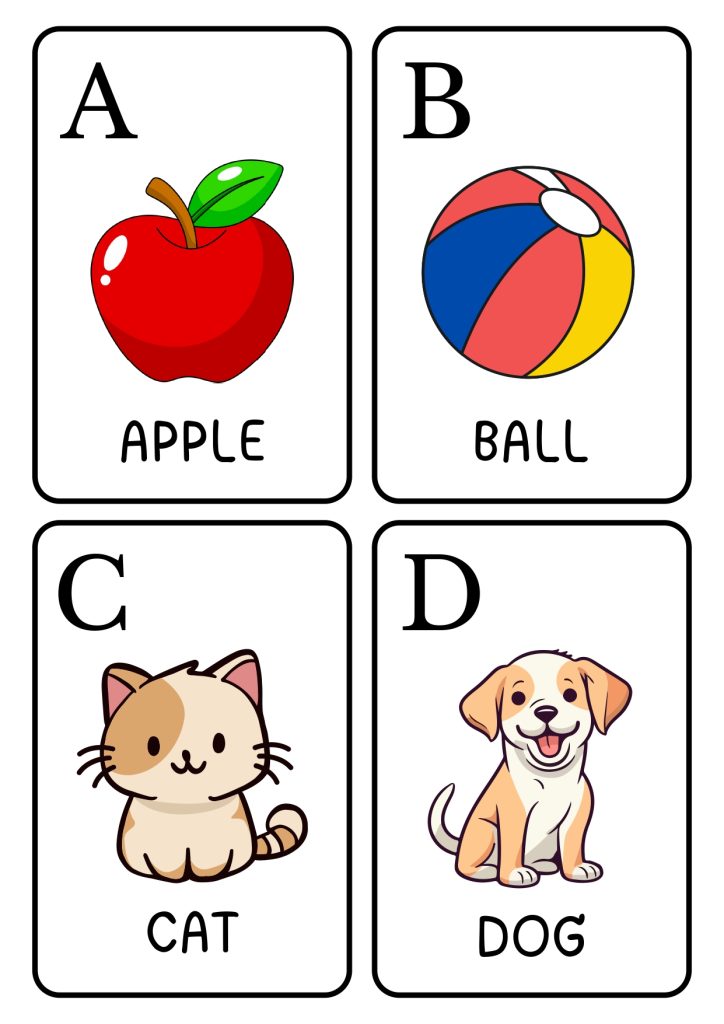




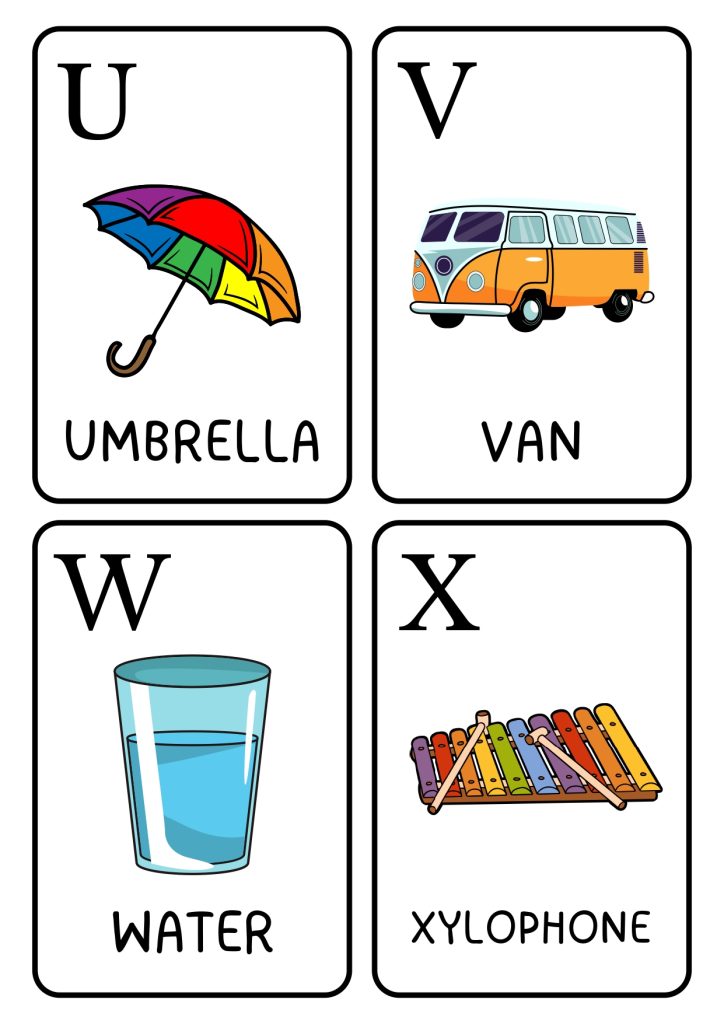
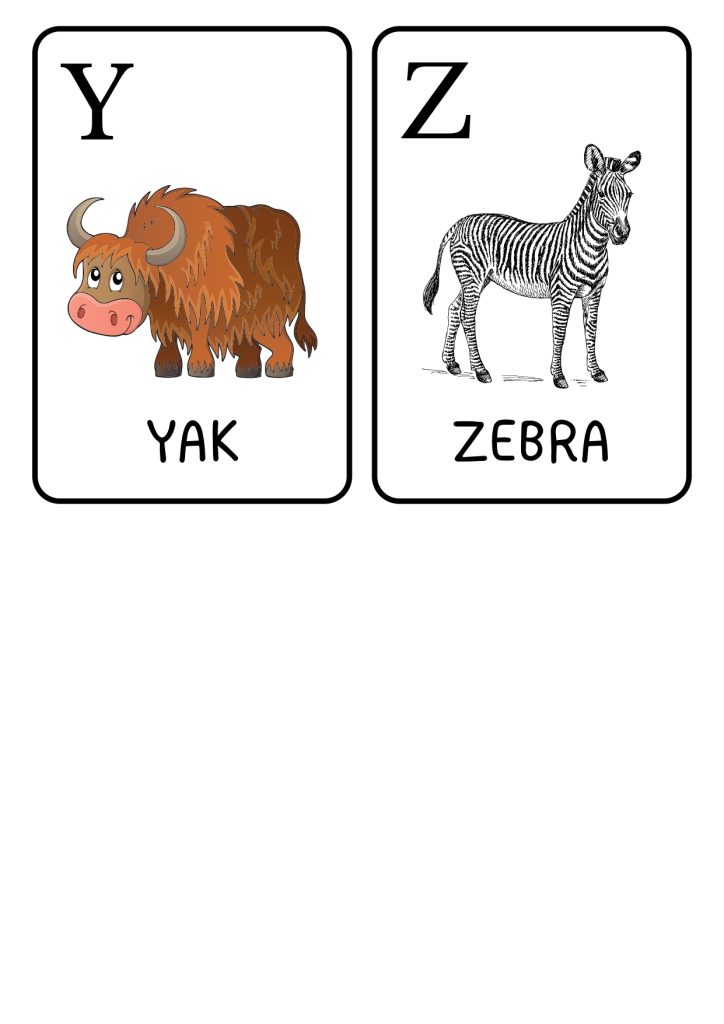
Each letter card works this way, connecting those mysterious squiggly letters to real things in their world. The familiar animals like the Dog, Cat, and Horse make immediate sense. Everyday objects like a Ball, a Jacket, and an Umbrella connect to their daily routines. The more exotic animals like the Lion, Monkey, and Zebra add excitement and keep them interested in learning more letters.
Animals That Make Them Gasp with Excitement
The animal cards in this alphabet set introduce toddlers to creatures they find absolutely fascinating. Two-year-olds naturally go crazy for animals, making these some of the most popular cards in the whole set.
Lions and elephants represent those big, impressive animals they see in picture books and maybe at zoos. Cats and dogs connect to pets they might know personally or see around the neighborhood. Fish introduce water animals, while birds like owls and parrots show creatures that fly.
Every animal card builds their vocabulary while feeding that natural curiosity about living creatures around them.
Numbers They Can Touch and Count
These ten number cards introduce counting from one to ten. Two-year-olds are just starting to understand that numbers mean “how many” of something.
- One shows a single item that they can count easily on one finger. Perfect for “one cookie” or “one toy” when they’re learning to share.
- Two displays two objects, helping them understand “more than one but not a lot.” Great for “two shoes” or “two hands.”
- Three builds on what they know, showing three items they can count by pointing at each one.
- Four introduces a slightly bigger group that they can still count without getting overwhelmed.
- Five connects perfectly to their fingers on one hand, making it easier to visualize this amount.
- Six adds one more to what they can count on one hand, expanding their number understanding.
- Seven continues building their counting skills with a number that’s getting bigger but still manageable.
- Eight shows a larger group that challenges them to count more carefully.
- Nine presents almost ten items, preparing them for that important milestone number.
- Ten represents the big goal number that connects all their fingers together.
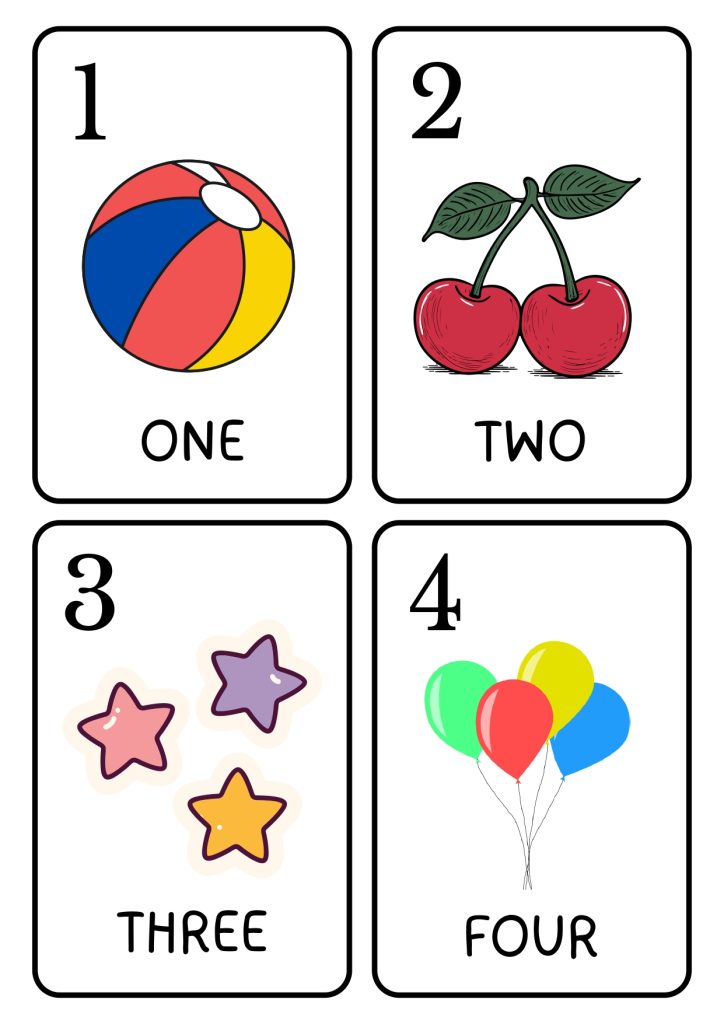

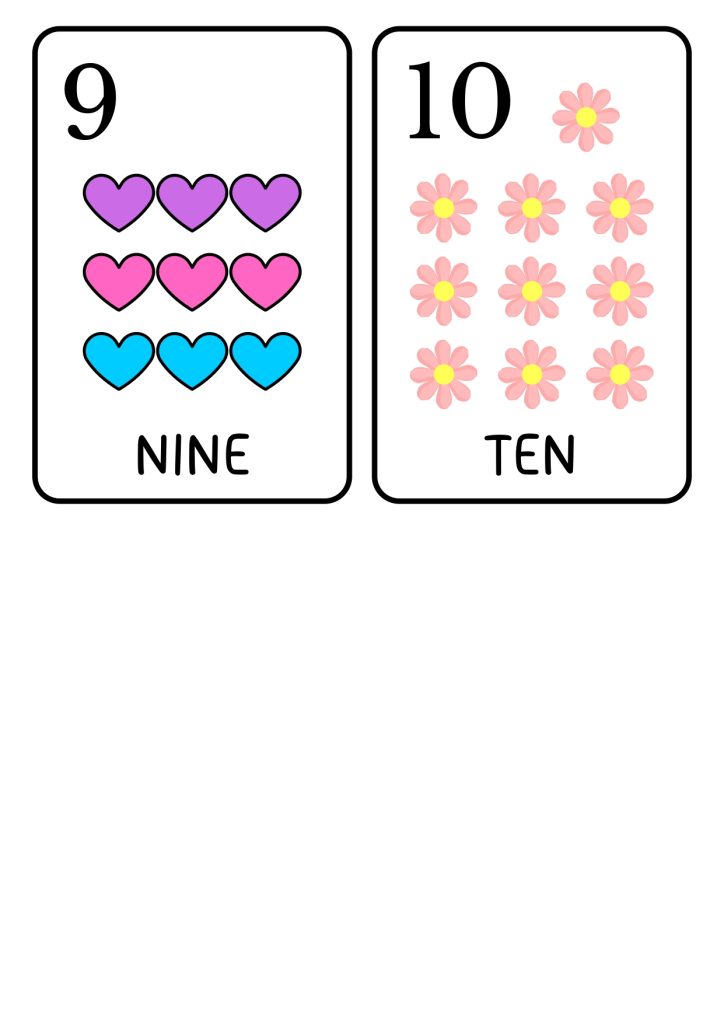
Most two-year-olds can count to three and actually understand what those numbers mean. The higher numbers get them ready for future learning while making number names familiar. They’ll use these cards to count everything from crackers on their plate to steps going upstairs.
Games That Actually Work
- Color Scavenger Hunt: Spread color cards on the kitchen floor. Call out objects around the room and watch your toddler find the matching color card. “Find the color of mommy’s shirt!” or “What color is that banana?”
- Shape Snack Time: During meals, help your toddler identify shapes in their food. Crackers might be circles or squares. Cheese slices could be triangles if you cut them right.
- Emotion Detective: When your toddler melts down, help them find the matching feeling card. This gives them actual words for what’s happening inside their chest. You can also use emotions flashcards for kids to help them develop emotional vocabulary.
- Letter Hide and Seek: Hide alphabet cards around the living room. When your toddler finds one, they say the letter and the animal or object that goes with it.
- Animal Noise Party: Use animal cards to practice sounds. What noise does the cat make? How about the horse? Two-year-olds think this is hilarious. You can also explore wild animals flashcards for kids to make the game more interesting.
- Everything Counting: Count stuff with your toddler using number cards. Steps going upstairs, Cheerios on their high chair tray, bath toys floating in the tub.
Why These Work So Well for Two-Year-Olds
Two-year-olds learn through doing the same thing over and over, connecting new stuff to things they already know, and touching everything. These cards succeed because they match how toddlers’ brains actually work.
The pictures are clean and simple. No busy backgrounds or extra junk that might confuse them or pull their attention away from the main idea.
Every single card shows something your two-year-old already knows about or sees regularly. This builds on what they’ve already figured out, instead of throwing completely new concepts at them.
The variety keeps them interested. Colors, shapes, feelings, letters, and numbers give them different kinds of learning in one box.
These cards grow with your kid. A two-year-old might just say color names, while a three-year-old could sort toys by color or find objects that match.
Print Them and Start Playing
Download the PDF file and print on regular paper or heavier cardstock if you want them to last longer. Color printing looks great, but black and white works fine too.
Cut along the lines, and these cards are ready for daily learning fun with your curious two-year-old.
These flashcards turn ordinary moments into vocabulary-building adventures. Your toddler will learn words, recognize letters, understand numbers, and talk about their feelings through the kind of play they already love doing.
